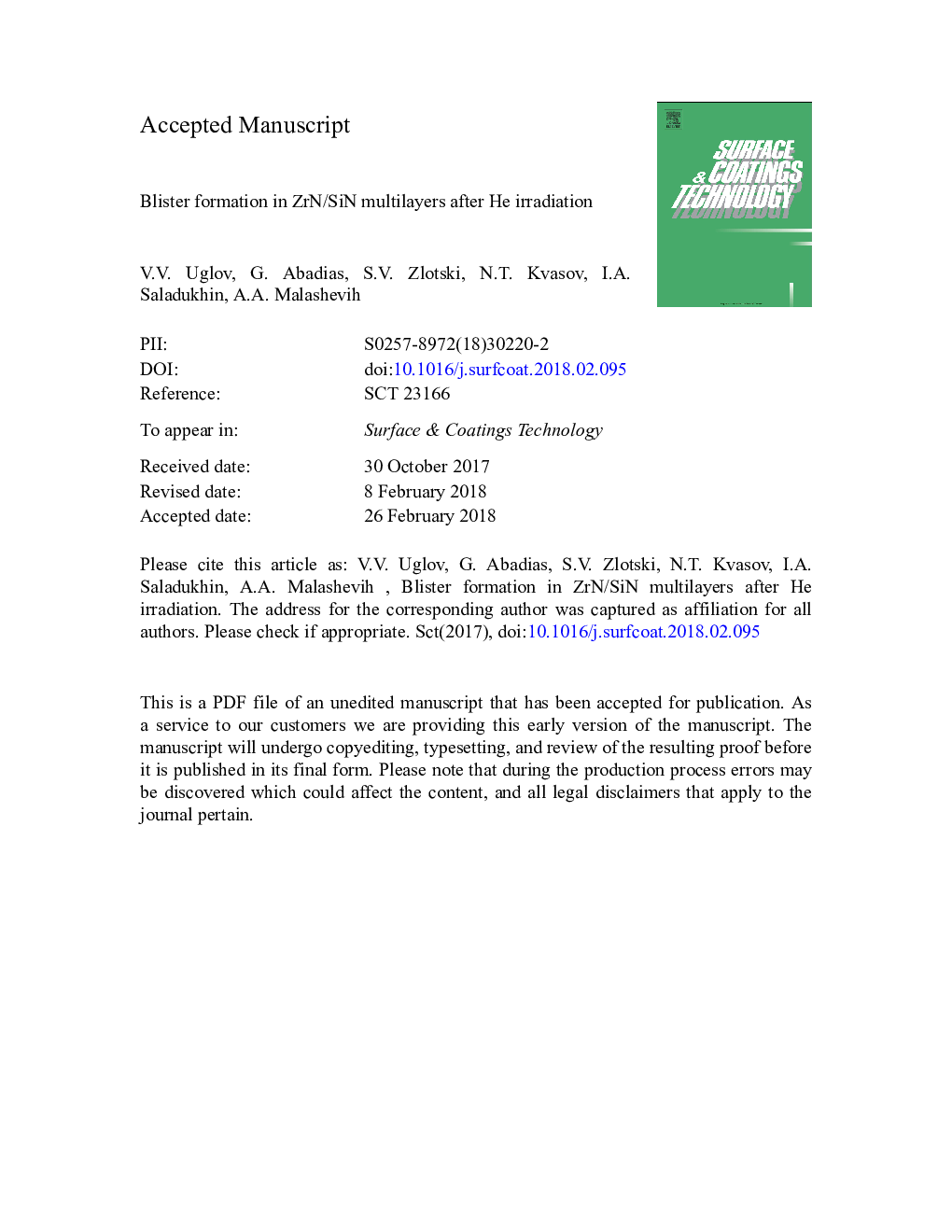| Article ID | Journal | Published Year | Pages | File Type |
|---|---|---|---|---|
| 8023750 | Surface and Coatings Technology | 2018 | 32 Pages |
Abstract
The work is dedicated to the investigation of blister formation in ZrN/SiNx multilayer films irradiated with He ions (30â¯keV) and annealed in a vacuum at 600â¯Â°C. Multilayer films were prepared by reactive magnetron sputter-deposition on Si wafers under Arâ¯+â¯N2 plasma discharges. ZrN/SiNx films were deposited by sequential sputtering from elemental Zr and Si3N4 targets at substrate temperature of 300â¯Â°C, with ZrN and SiNx layer thickness varying from 2 to 10â¯nm. According to transmission electron microscopy (TEM), the multilayer films consist of nanocrystalline (002)-oriented ZrN and amorphous SiNx layers. Surface morphology changes of ZrN/SiNx films irradiated with He ions (30â¯keV) and annealed in a vacuum at 600â¯Â°C were studied by scanning electron (SEM) and atomic-force microscopy (AFM) methods. It has been found that under He ions (30â¯keV) irradiation ZrN/SiNx multilayer films remain resistant to blistering and flaking up to fluence of 8·1016â¯cmâ2. The investigations have shown influence of the crystalline and amorphous layer thicknesses on the character and damage degree of the multilayer films surface as a result of post-radiation annealing at 600â¯Â°C. In this work potential processes (mechanisms) of blister formation and flacking in ZrN/SiNx multilayer systems are discussed.
Related Topics
Physical Sciences and Engineering
Materials Science
Nanotechnology
Authors
V.V. Uglov, G. Abadias, S.V. Zlotski, N.T. Kvasov, I.A. Saladukhin, A.A. Malashevih,
